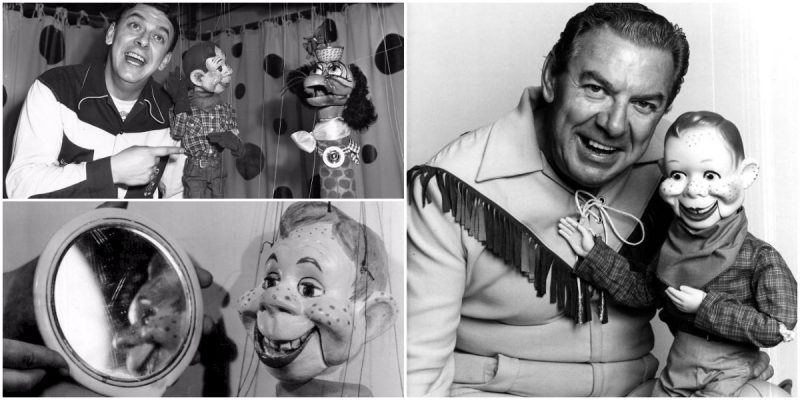“Oh, hi, boys and girls … it is our last Howdy Doody Show … and we would like to dedicate this to all of you boys and girls, who have watched our show so faithfully throughout this many, many years.”
September 24, 1960, is a day recorded in television history as the one during which Buffalo Bob Smith said goodbye to all of his fans, packed up his lovable wooden freckled friend for good, and brought an end to The Howdy Doody Show, one of the most watched children’s shows of all time.
It is said that all present, the camera men, the floor manager, the whole production crew, and Bob himself, were drowning in tears during the filming of this last part of a 13- year journey that brought so much joy and laughter to so many.
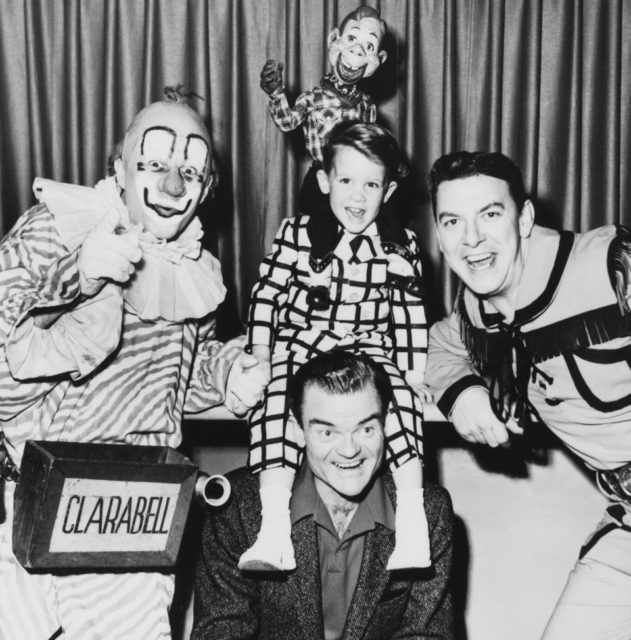
A memorable ending of a memorable show that started back on December 17, 1947, when Buffalo Bob asked all the children present or sitting at home watching, ”Say, kids, what time is it?”
”It’s Howdy Doody time,” they responded unanimously. And with this, one heartwarming story began.
When introduced, the much-beloved puppet Howdy was actually a cute country character named Elmer who was often included in the “Triple B (Big Brother Bob) Ranch Show,” a radio show run by Bob Smith. The show was spectacular in its numbers, so the executives of NBC decided that Bob should host a television program for kids, accompanied by Elmer.
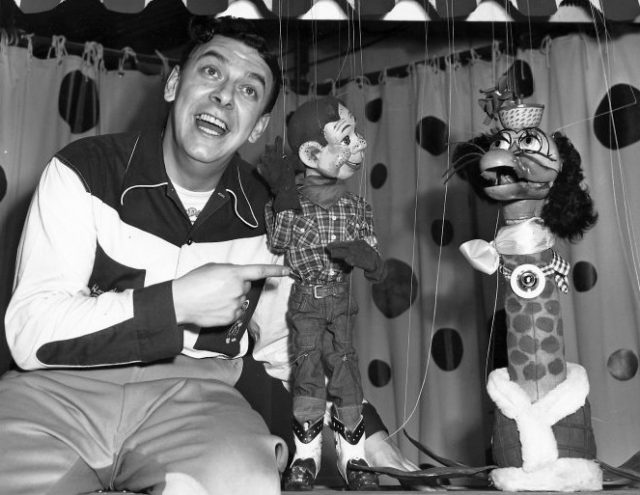
At first, the name of the show was Puppet Playhouse, which opened with Elmer greeting the audience. “Well, uh, howdy doody!” was his greeting, a catchphrase that made the producers change the name to The Howdy Doody Show. Airing only on Saturdays at first, the program soon grew to be so popular that Buffalo Bob and Howdy aired every day, Monday to Friday, at 5:30 pm.
Buffalo Bob was actually Robert Schmidt, an entertainer born in Buffalo, New York, who started his career as a radio showman and a DJ very early, at the age of 15. As for Howdy Doody, he was so much more than the freckled wooden puppet with big ears, he was the soul that Bob envisioned to star in his radio show.
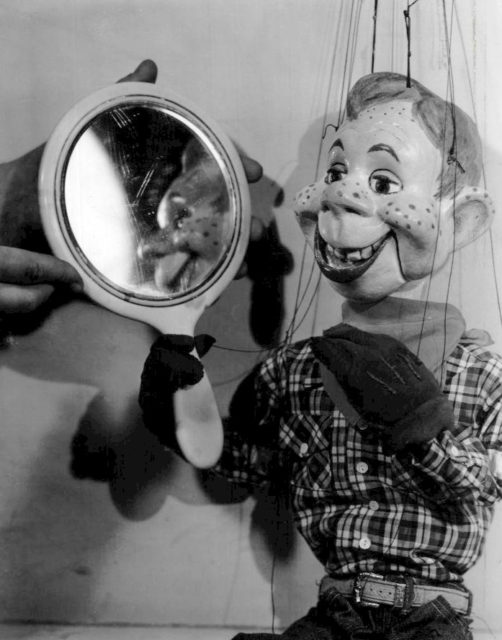
The first version of the puppet was made by Frank Paris, a professional puppeteer who after only a year took the doll with him when he quit the studio over some unresolvable intellectual property dispute, claiming it was solely his. The studio had to present a cover story for his absence, so they explained that Howdy Doody was fighting vigorously for two Christmas Holidays, cheaper banana splits, one school day in each year, history books filled with lots of pictures, and free circus entrance for kids, among many other things. Ah, what a world for kids to live in.
Walt Disney Studios constructed the next incarnation: the wooden cowboy, dressed in blue jeans, bandana, and a cowboy hat, who was born in the circus town Doodyville and managed to run for president, twice. His distinctive voice was at first lent by Bob himself who pre-recorded all of Doody’s lines, for he was neither a ventriloquist nor a puppeteer.
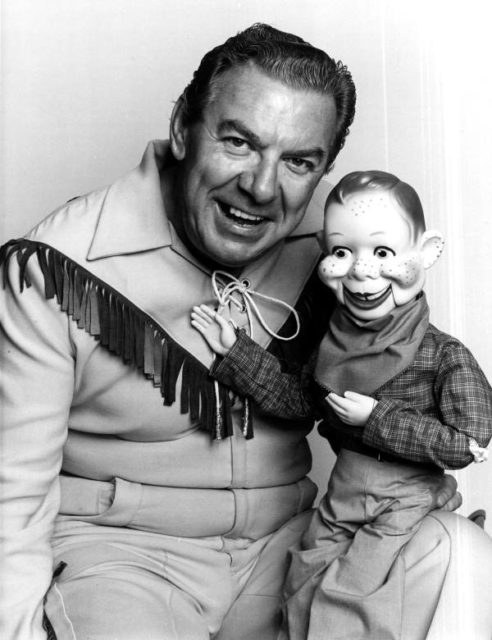
Howdy had a sister, Heidi Doody. She was made by Margo Rose and voiced by Norma MacMillan and Donna Miller.
Besides his sister, he also had many, many friends. There was Chief Thunderthud, the villainous leader of Ooragnak Indian tribe (Kangaroo spelled backward) that Howdy befriended after teaching him about the good ways of humanity. Among the others were the Flub-A-Dub, a spaghetti-eating amalgamation made out of seven different animals: duck, cat, giraffe, cocker spaniel, seal, raccoon, and Dachshund, gifted with a memory of an elephant, and there was Ranger Bob portrayed by William Shatner in 1954 (a decade before he was beamed up into greater stardom). Last but not least, Clarabel the Clown.
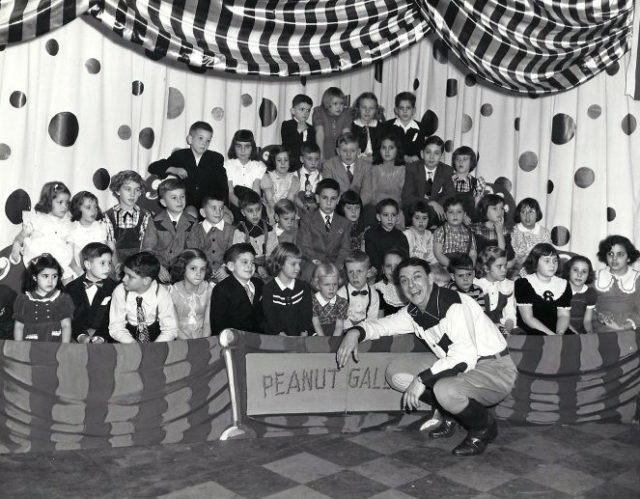
Howdy, Buffalo Bob, and their fellowship had a run of approximately 2,500 shows, entertaining their young audience for 13 years, teaching kids why it is so important to be humane in life. It was the first show ever to be broadcast in color and the first to have a live music. The show ended with “Goodbye kids,” a line uttered in tears by Clarabel (Lew Anderson), who during all those years had remained silent and didn’t say a single word.
Smith himself, although disappointed, wasn’t bitter or angry at all that the show ended. When asked about how he felt, he is recorded answering with “We had a good run. Besides, how many TV shows ever lasted 13 seasons?”
